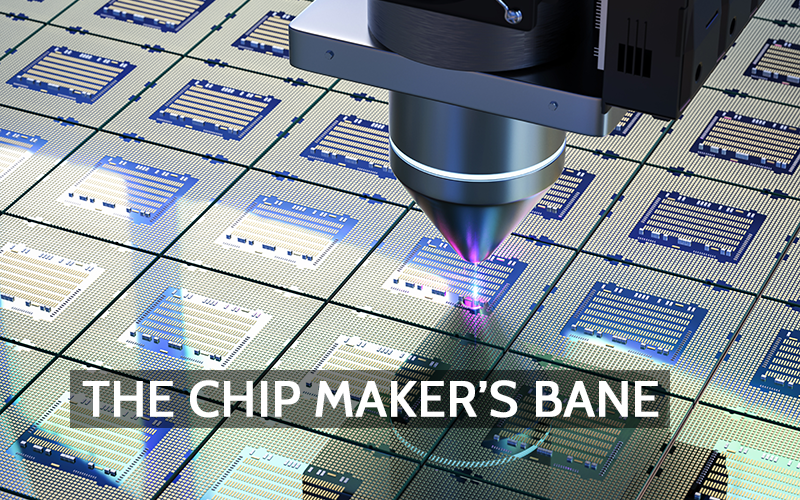When people think of semiconductor fabrication and electronics manufacturing, they often picture engineers clad in full-body cleanroom suits, working in sterile, white-walled facilities. But while many are aware that such environments are necessary, few understand why air quality control is so critical in these industries.
Why Are Cleanrooms Essential for Microchip Manufacturing?
Semiconductors and other electronic components are incredibly sensitive to contaminants. A single speck of dust, invisible to the naked eye, can render an entire batch of microchips defective, leading to costly production losses. In addition to dust, airborne contaminants such as chemical vapors, humidity fluctuations, and microscopic particles can interfere with delicate manufacturing processes.
Cleanrooms are controlled environments designed to minimize these risks. They regulate air quality by controlling particulate levels, humidity, and temperature, ensuring optimal conditions for precision manufacturing. The level of cleanliness is classified using ISO standards, with semiconductor fabrication requiring some of the strictest air quality controls—ISO Class 1 or 2 cleanrooms, where even the tiniest airborne particles are meticulously filtered out.
Sources of Air Contamination
There are several sources of air contamination in semiconductor and electronics manufacturing, including:
- Human Activity: Even in full-body suits, workers shed skin cells and introduce particles into the air.
- Machinery and Equipment: Manufacturing equipment emits particles through wear and tear, friction, and chemical reactions.
- Chemical Processes: Many semiconductor fabrication steps involve volatile chemicals, which can introduce contaminants if not properly managed.
- Environmental Air: Airborne pollutants from outside the cleanroom can enter if proper filtration and pressurization are not maintained.
How Air Quality is Controlled
To maintain optimal air quality, manufacturers employ multiple techniques, including:
- High-Efficiency Particulate Air (HEPA) and Ultra-Low Penetration Air (ULPA) Filters: These filters remove over 99.99% of airborne contaminants, ensuring clean air circulation.
- Laminar Airflow Systems: Designed to direct air in smooth, consistent patterns to prevent turbulence, which can increase contamination risk.
- Positive Air Pressure: Prevents unfiltered air from entering cleanrooms by maintaining higher internal pressure compared to surrounding environments.
- Chemical Air Filtration: Removes volatile organic compounds (VOCs) and other chemical contaminants that could interfere with production processes.
- Humidity and Temperature Control: Semiconductor fabrication requires precise environmental conditions, with tight control over moisture levels to prevent static discharge and oxidation.
Consequences of Poor Air Quality in Electronics Manufacturing
Failure to control air quality can lead to significant consequences, including:
- Product Defects: Contamination can cause electrical failures, performance degradation, or complete chip malfunction.
- Production Losses: A single contamination event can render an entire batch of semiconductors unusable, resulting in millions of dollars in losses.
- Shortened Product Lifespan: Even minor contamination can lead to reliability issues, affecting product longevity and consumer trust.
- Safety Hazards: Some airborne contaminants, if improperly managed, can pose health risks to workers or contribute to chemical reactions that compromise workplace safety.
The Future of Air Quality Control in Electronics Manufacturing
As semiconductor components continue to shrink in size and increase in complexity, the demand for more stringent air quality controls is growing. Innovations in filtration technology, AI-driven air monitoring systems, and nanotechnology-based contamination prevention will play crucial roles in the future of clean manufacturing.
For consumers, understanding the role of air quality in electronics manufacturing sheds light on why advanced microchips and electronic devices require such precise and controlled environments. The next time you power up your smartphone, laptop, or gaming console, you can appreciate the invisible yet essential role that cleanroom air quality plays in making modern technology possible. By ensuring optimal air quality, the electronics industry can continue to push the boundaries of innovation while maintaining high standards of quality and reliability.
Related Articles:
Cold Weather and Your Health: Why You Get Sick More in Winter and How to Prevent It
References
- https://aaqr.org/articles/aaqr-23-02-oa-0034
- https://www.nist.gov/chips/air-quality-and-semiconductor-industry
- https://www.epa.gov/stationary-sources-air-pollution/semiconductor-manufacturing-national-emission-standards-hazardous
- https://www.golighthouse.com/en/knowledge-center/semiconductor-manufacturing-quality-control/


